December 15-23, 2018
12/15: Atlanta > Lima (1 night)
12/16-17: Lima > Cusco > Aguas Calientes@Machu Picchu (2 nights)
12/18-19: Aguas Calientes > Cusco (2 nights)
12/20-21: Cusco > Lima > Iquitos (2 nights)
12/22-23: Iquitos > Lima (Miraflores) (1 night)
Prelude
A spontaneous first trip abroad...solo!
Owing to an accumulation of vacation time reserved for moving in anticipation of buying a house, the uncertainty of an ongoing reorg at work, and low housing inventory, the timing proved perfect for finally seeing the Amazon and Machu Picchu, a trip I'd always wanted to make.
Five years prior, I prioritized the Amazon via Peru as my destination, and by the time I was ready to visit, I'd achieved a low-intermediate level of conversational Spanish.
I booked my flights and hotels and raced off to a travel clinic where I managed to get vaccinations for hepatitis A, yellow fever (I didn't have time for typhoid), and all the prescriptions I would need, including something for acclimating to high altitude, anti-malaria, and a Z pack in case I got the squirts.
12/15: Atlanta > Lima (1 night)
My six-hour flight arrived in Lima late at night, and my flight to Cusco was so early the next day that there was no point in sleeping. So around 3 am, I walked across town to go people-watching, passing various street characters and stray dogs along the way.
I found an upscale disco tech in Miraflores, where I waded through a crowd of well-dressed millennials looking like someone's dad and feeling like someone's creepy uncle before returning to the airport.
12/16-17: Lima > Cusco > Aguas Calientes@Machu Picchu (2 nights)
The morning flight to Cusco was spectacular. I didn't have a window seat, but I could see snow-capped mountains behind two unmistakably Inca men alternately looking at their phones and dozing off, oblivious to the view over their shoulders. Upon witnessing my amazement, they were proud to declare themselves Cusco natives.
I took a private car from Cusco about two hours to a train station. The roads were strewn with more wandering stray dogs, half-completed buildings painted with political campaign messages, and women in traditional garb carrying farm instruments.
The glass panels of the train lent an unobstructed view as we passed through the mountains, about an hour's trip to Aguas Calientes. A guy from Colorado said he had been approached in Cusco by people selling coke and massages. I began to realize that Aguas Calientes is just a small loop of businesses set around the mountain for tourism, while Cusco is the actual city.
Mountains surround the entire town of Aguas Calientes, and the views from every window of my hotel were breathtaking, looking point-blank up at the mountains. My hotel, Taypikala Boutique, is a hand-crafted beauty, reasonably priced, and offers excellent service.
After check-in, I went to the hot springs, where I conversed with a Canadian, several Germans, and groups from Cusco and Argentina in my best broken Spanish before heading to dinner at a restaurant called Mapacho. The restaurant's deck overlooks a narrow river surrounding the mountain, and I returned several times for seafood soup, a Peruvian-Chinese fusion dish called chaufa, and a beer.
The next morning, I was up early for the bus to the top of Machu Picchu (hell no, I wasn't there to hike). Fortunately, the rain held out until my tour ended at noon.
I took a private car from Cusco about two hours to a train station. The roads were strewn with more wandering stray dogs, half-completed buildings painted with political campaign messages, and women in traditional garb carrying farm instruments.
The glass panels of the train lent an unobstructed view as we passed through the mountains, about an hour's trip to Aguas Calientes. A guy from Colorado said he had been approached in Cusco by people selling coke and massages. I began to realize that Aguas Calientes is just a small loop of businesses set around the mountain for tourism, while Cusco is the actual city.
Mountains surround the entire town of Aguas Calientes, and the views from every window of my hotel were breathtaking, looking point-blank up at the mountains. My hotel, Taypikala Boutique, is a hand-crafted beauty, reasonably priced, and offers excellent service.
After check-in, I went to the hot springs, where I conversed with a Canadian, several Germans, and groups from Cusco and Argentina in my best broken Spanish before heading to dinner at a restaurant called Mapacho. The restaurant's deck overlooks a narrow river surrounding the mountain, and I returned several times for seafood soup, a Peruvian-Chinese fusion dish called chaufa, and a beer.
The next morning, I was up early for the bus to the top of Machu Picchu (hell no, I wasn't there to hike). Fortunately, the rain held out until my tour ended at noon.
My guide mentioned how reputable scholars support claims that Inca couriers delivered messages to the top of the mountain, running from Cusco within five hours, fueled by 2 kg of cocoa.
When he addressed customary human sacrifice, I asked how those beliefs translate to modern times. He stated that bodies have been found as recently as the 90s and that there are areas where tourists shouldn't go alone, adding that witchcraft is known to still be in practice, and true shamans, though harder to find, are still established and at various levels of expertise. Upon my departure, a hotel worker asked his son on my behalf to contact a known shaman, but the man was away in Lima.
During lunch at Mapacho, I spoke briefly to the hostess, a 21-year-old Venezuelan with excellent English who hadn't completed university before fleeing her country. I later met another Venezuelan in Iquitos, a civil engineer in his mid-thirties, who had only arrived a few months prior.
The waitress, a young Cusco native, explained that everyone in Aguas Calientes works twenty-four days consecutively, then returns to their homes in Cusco to take four days off. I met one independent shop owner at Aguas Calientes, so it's not a requirement to be employed by the town.
During lunch, I had an amusing chat with a beet-red and bleary-eyed American contract military pilot who apparently worked only six months out of the year and was going through a divorce, so he spent his off-months riding motorcycles and adventure traveling. He shared that his ideal contribution to humanity would be airdropping relief aid to starving countries through the Red Cross. But his anecdotes offered me a window into the party-hearty world of hostile hopping, and he concluded our lunch proposing to offload a sheet of acid with instructions detailing a fool-proof way to smuggle it home in gum wrappers. What a guy.
That afternoon, I summoned my best Spanish hackery to speak with a local standing in front of another restaurant and inquire about the cultural separation of Catholics and Incas. He explained that there was no conflict because they are all one people.
That afternoon, I summoned my best Spanish hackery to speak with a local standing in front of another restaurant and inquire about the cultural separation of Catholics and Incas. He explained that there was no conflict because they are all one people.
Then, a street vendor interrupted us, selling what I later learned to be hand-made but mass-produced paintings aimed at tourists. And, I'll confess, I willfully bought four paintings at ridiculous prices, tuning in to imagery of tribal musicians and the Incan earth mother deity, Pachamama.
That night, I had hoped to check out the disco techs known for hosting the locals, but the action started later than I was willing to stay up for, and I made my way back to my hotel, walking past the shops as they closed. Once again, I noticed dogs roaming free through the town, friendly and playful, and it was unclear whether they had owners as they seemed to be fending for themselves.
That night, I had hoped to check out the disco techs known for hosting the locals, but the action started later than I was willing to stay up for, and I made my way back to my hotel, walking past the shops as they closed. Once again, I noticed dogs roaming free through the town, friendly and playful, and it was unclear whether they had owners as they seemed to be fending for themselves.
I noticed a white shepherd playing with a smaller dog and asked a shop owner for something to feed it, who declared, "That dog likes ham and cheese." The dog choked down the croissant and wandered away without a glance. But as I approached my hotel, he reappeared with an outpouring of gratitude, and after lots of petting, I gave him water and went to bed. The next morning, the desk manager told me the dog had stayed by the hotel door all night. I searched around, but it was nowhere to be found.
12/18-19: Aguas Caliente > Cusco (2 nights)
The next day, on my return train ride to Cusco, I spoke with a personable South Korean guy excited to recount his adventures dating American women as a foreign student in the U.S., contrasting against the rigorous expectations and pressures of courtship in Korean culture. I then joined a busload of locals as the solo Gringo for the final leg to Cusco.
In Cusco, I stayed at the modest but comfortable Torre Dorada Hotel. The owner is a sharp, well-traveled Polish businesswoman born in Cusco, and her friendly staff helped quickly orient me to the town so I could make the most of my short stay. She had lived in Switzerland, which she considers a nearly perfect country, and was frustrated with Cusco's lack of systematic operation.
In Cusco, I stayed at the modest but comfortable Torre Dorada Hotel. The owner is a sharp, well-traveled Polish businesswoman born in Cusco, and her friendly staff helped quickly orient me to the town so I could make the most of my short stay. She had lived in Switzerland, which she considers a nearly perfect country, and was frustrated with Cusco's lack of systematic operation.
In the hotel lobby, a heavy lady was recovering after getting woozy from the altitude and collapsing in the foyer. I may have noticed some sensation at one point walking at night in Cusco, but I took my meds ahead of time as directed, and that was likely sufficient to prevent any issues. People are constantly handing out cocoa leaves to tourists, which is supposed to help.
In Cusco, I first visited the Temple of San Blas, built in the 1500s and features elaborate woodcarvings covered in gold. Impressive cathedrals and churches surround the city, and though the blending of Inca and Catholic imagery is remarkable, I felt conflicted learning how the magnificent Incan civilization - a brilliant yet brutal, short-lived culture - was dominated by the Spanish through the Catholic church.
Leaving the temple, I found various shops and had a traditional dinner at Pachapapa restaurant, a beautiful, ambient outdoor space. At least for this round, I eschewed guinea pig and other unusual fare for a lamb skewer. Pachamama, Pachapapa.
In Cusco, I first visited the Temple of San Blas, built in the 1500s and features elaborate woodcarvings covered in gold. Impressive cathedrals and churches surround the city, and though the blending of Inca and Catholic imagery is remarkable, I felt conflicted learning how the magnificent Incan civilization - a brilliant yet brutal, short-lived culture - was dominated by the Spanish through the Catholic church.
Leaving the temple, I found various shops and had a traditional dinner at Pachapapa restaurant, a beautiful, ambient outdoor space. At least for this round, I eschewed guinea pig and other unusual fare for a lamb skewer. Pachamama, Pachapapa.
I browsed local shops at night and found fantastic masks used in traditional Inca dances. Along the way, I graciously declined a generous offer from a hospitable troupe of drug dealers who were obliged to direct me to an excellent tattoo shop, where I received an enlightening consultation from a business partner specializing in piercings.
I'm not a tattoo guy, but I was tempted, and after expressing my fondness for Incan iconography, he produced a reference book and suggested imagery of a staff god as depicted on the Raimondi Stele. Fortunately, there wasn't enough time, and despite my rapid transformation into a newbie sucker tourist, I was spared from succumbing to a permanent souvenir.
I briefly dropped by a sparsely populated disco tech but opted to sleep early, maximize my morning, and see Cusco before my flight at noon.
I visited one other church, then the Inka Museum where I observed traditional weaving, and I was warned by a guard for photographing the preserved remains of a human sacrifice on exhibit.
Unfortunately, I missed seeing the Sacred Valley and many other ruins, performances of traditional Incan dances, and much more. There is so much to see in Cusco, beautiful shops and people; I could wander the streets forever and never tire of it.
12/20-21: Cusco > Lima > Iquitos (2 nights)
Lima
Upon returning to Lima, I learned my flight to Iquitos (city on the Amazon) was delayed until 10:20 pm, so I took a taxi to the mall for a phone charger. I was dismayed to find so many fast-food chicken places in the food court, including Popeye's and KFC, but I finally found some decent traditional Peruvian food.
I ran late returning to the airport. My confused taxi driver and I hit heavy return traffic in the evening, and after a panicked sprint across the airport to my gate, I was relieved to find my flight had been delayed again to 1 am.
At the airport, everyone was so upset about the delays that the crowd began chanting like an organized protest. It was ridiculous. The police were called in, and when I asked if anyone spoke English to explain the situation, one of the loudest protestors, a big fat woman with a tattoo, especially enjoyed giving me the hand with the cops standing beside her; all of them looking at me with utter contempt.
I ran late returning to the airport. My confused taxi driver and I hit heavy return traffic in the evening, and after a panicked sprint across the airport to my gate, I was relieved to find my flight had been delayed again to 1 am.
At the airport, everyone was so upset about the delays that the crowd began chanting like an organized protest. It was ridiculous. The police were called in, and when I asked if anyone spoke English to explain the situation, one of the loudest protestors, a big fat woman with a tattoo, especially enjoyed giving me the hand with the cops standing beside her; all of them looking at me with utter contempt.
Iquitos
We arrived at 4 am in Iquitos, where I had decided to play it safe and stay at Doubletree Hilton, a sophisticated, centrally located property at a reasonable price. The city is swarming with tuk-tuks (motorcycle taxis) and motorcycles.
At breakfast, I chatted with three well-educated, young Peruvian sisters with libertarian leanings, then went to the front desk to find a reputable guide to find non-tourist experiences and was referred to Johmer Tours, who suggested a visit to the Belen Market that afternoon, followed by a trip into the jungle with a second guide the next day, and I paid a little extra in advance to show my appreciation. Both guides were excellent - born and raised in the jungle, they spoke with a unique accent, an amalgam of English, Spanish, and their tribal language.
The owner, Jemer, was 27 years old and married with a two-month-old baby. He offered to take me on an eight-hour boat ride into the jungle to stay at his home village, but I had to return to Lima the following day. I would love to visit again and meet his family.
We arrived by tuk-tuk at the Belen Market, where Jemer left his jacket at his uncle's space. The market is otherwise considered dangerous for tourists due to the risk of theft and robbery.
We arrived by tuk-tuk at the Belen Market, where Jemer left his jacket at his uncle's space. The market is otherwise considered dangerous for tourists due to the risk of theft and robbery.
We passed through sections of used clothing, meats and produce, then entered a black market that sold protected animals and medicinal plants, including several hallucinogens used in various rituals.
Ayahuasca is a powerful hallucinogen that causes severe vomiting and diarrhea. I met many locals who have used it and said it produced an out-of-body experience, unlike San Pedro (mescaline) which induces a euphoric but powerful feeling, much like LSD.
Although I don't smoke, I bought a pack of cigarettes, along with some kind of hallucinatory tobacco wrapped in a leaf, and later gave both to a hotel attendant. When smoked, the plant is said to produce a dream in which lost items - including someone who took another's wife - will be revealed.
We took a boat through a channel of floating houses and then returned to see more of the market. Finally, we ascended a rickety metal staircase to the top of a cathedral for a view of the entire city. We returned to the hotel after walking several blocks through a commercial merchant district outside the market.
We took a boat through a channel of floating houses and then returned to see more of the market. Finally, we ascended a rickety metal staircase to the top of a cathedral for a view of the entire city. We returned to the hotel after walking several blocks through a commercial merchant district outside the market.
Iquitos
That night, I waved down a tuk-tuk and looked for a restaurant called Ikiitu, known for its traditional cuisine. I ordered catfish, which was a little tough but flavorful, and a bowl of turtle soup, which has a taste and texture similar to beef.
The waiter was a bright 21-year-old guy who was studying English online through the University of Michigan with an Australian teacher. I told him I wanted to see the disco techs, so we met at one club, watched some live performances, then left on his scooter to attend a concert with the locals, where I drew a lot of attention as the solo Gringo.
We joined a group of his young friends who were smoking weed and passing around and refilling a single cup of beer. I didn't partake, especially knowing I had to be up early, and no one was offended.
Afterward, we left for late-night burgers and talked about American culture. He was especially interested in racial tension in the U.S.
I returned to my hotel and managed to get three hours of sleep before meeting my second guide at 7 am.
Amazon
We arrived at another part of the Belen market, where I saw more odd items for sale before boarding a boat and heading down the Amazon.
In the jungle, I was impressed how the guide didn't rely on trails and roamed freely in whatever direction he chose with his machete, stopping to point out various fruits, flowers, tarantulas, monkeys, and birds.
I asked the guide about life in the jungle and what they teach the children. He explained that knowing how to use a machete and avoiding getting lost were critical, that almost everything one needs is available, and that his 93-year-old grandfather stopped climbing trees at age 65. They typically eat fish and bananas twice daily and rarely eat vegetables. Other foods include fruits, potatoes, monkeys, and tarantula, which he said they snack on like popcorn.
He said he was teased for being skinny when he started working as a guide in the city, so he began eating more rice and gaining weight, and that he liked having more energy for playing soccer. I encouraged him to appreciate his grandfather's age and health, thinking a lot about city versus jungle living, and again, as with the Spanish versus the Incas in Cusco, I felt conflicted. The guide has three children, and we discussed his relationship with his wife. He showed me his website, which he learned to build himself by watching YouTube videos.
At the end of our jungle walk, we stopped at a thatched hut lodge where he had prepared a lunch of grilled piranha, which was as tasty as any fish I've ever had.
I asked the guide about life in the jungle and what they teach the children. He explained that knowing how to use a machete and avoiding getting lost were critical, that almost everything one needs is available, and that his 93-year-old grandfather stopped climbing trees at age 65. They typically eat fish and bananas twice daily and rarely eat vegetables. Other foods include fruits, potatoes, monkeys, and tarantula, which he said they snack on like popcorn.
He said he was teased for being skinny when he started working as a guide in the city, so he began eating more rice and gaining weight, and that he liked having more energy for playing soccer. I encouraged him to appreciate his grandfather's age and health, thinking a lot about city versus jungle living, and again, as with the Spanish versus the Incas in Cusco, I felt conflicted. The guide has three children, and we discussed his relationship with his wife. He showed me his website, which he learned to build himself by watching YouTube videos.
At the end of our jungle walk, we stopped at a thatched hut lodge where he had prepared a lunch of grilled piranha, which was as tasty as any fish I've ever had.
The boat trip back to Iquitos included a brief and fruitless attempt to fish for piranha, and we had the good fortune of sighting a pink dolphin. Along the way, we acquired one more passenger who had lived in the jungle for four years, having left several careers in Ireland after fleeing his war-torn home country (somewhere in the Balkans) and losing all his friends and family. He lived happily experimenting and 'communicating' with various medicinal plants. Our drunken boat driver had transformed into a caricature and began speaking to each of us at length in zealous and dogmatic Spanish, most of which I didn't understand but (mostly) found highly amusing.
I returned to my hotel with enough time to rinse off in a shower by the pool, pleased that the combination of repellent and coverings had kept me bite-free, with an occasional flick of my hat brim to scatter the dense cloud of mosquitos away from my head. My guide wore no protection and claimed they wouldn't bother him if he didn't think about them.
I returned to my hotel with enough time to rinse off in a shower by the pool, pleased that the combination of repellent and coverings had kept me bite-free, with an occasional flick of my hat brim to scatter the dense cloud of mosquitos away from my head. My guide wore no protection and claimed they wouldn't bother him if he didn't think about them.
12/22-23: Iquitos > Lima (Miraflores) (1 night)
On my return flight, I had a great conversation with an Iquitos native - a man in his sixties who spoke excellent English. Upon arrival in Lima, we shared a cab to Miraflores, and he invited me to visit him in Spain, where he often travels to see his son.
I was pleased to find a luxurious yet remarkably affordable hotel, just walking distance from the historic architecture and cliffs overlooking the sea, and regret that I cannot recall the name.
I was pleased to find a luxurious yet remarkably affordable hotel, just walking distance from the historic architecture and cliffs overlooking the sea, and regret that I cannot recall the name.
After sleeping in the following day, I went to the seaside cliffs. The walk was lined with elegant, simple homes, and I found a small convenience store that carried various produce, including black maize.
At the cliffs, paragliders circled above, and surfers darted across the waves below. Being my last day, it was finally time to risk eating uncooked food and completing my Peruvian experience with ceviche.
I found El Señorío de Sulco, a fantastic Inca-themed restaurant nearby. The ceviche was medium spicy, which was plenty damn hot, along with seafood and rice, a side of white maize which is nothing like corn in taste or texture, some kind of sweet potato, and two desserts - one made from black corn and another that tastes like butterscotch pudding.
On the walk back to the hotel, I noticed my stomach felt a little queasy. By the time I reached the hotel, I realized I had finally achieved the proverbial revenge of Pachamama and Pachapapa. I felt better, then worse, and feared I'd be unable to fly.
On the walk back to the hotel, I noticed my stomach felt a little queasy. By the time I reached the hotel, I realized I had finally achieved the proverbial revenge of Pachamama and Pachapapa. I felt better, then worse, and feared I'd be unable to fly.
Immediately upon exiting my taxi to the airport, I dropped on my hands and knees and conveniently heaved into a gutter directly behind the car. Unflinching, the driver simultaneously informed me between bursts that he expected 100 soles, which is about 60 more than the usual fare since it was the hotel's cab. And they say Gringos are cold.
Thankfully, I had no further convulsive incidents on the plane (a few manageable ones), but my nausea and dehydration made me anxious to arrive home from such a confined space for a six-hour flight.
Epilogue
Cars in Lima are small. They have manual transmissions and move like a crowd at the mall - not necessarily in lanes, and mostly accommodating each other as needed, beeping to communicate instead of laying on the horn in anger. At night, I observed some shouting and blaring horns, but considering Lima has a population of 10 million, I conclude they behave well, especially compared to my city, a population of 486k with giant SUVs, racing motorcycles, and road rage.
Apart from my not-so-surprising after-dinner ending, my trip was a pure visceral delight. I was utterly immersed, barely slept and never felt lonely. Traveling solo allowed me to maximize my attention and channel the experience. And I took every opportunity to use my Capitán Cavernícola Spanish, which gave me the feedback to realize I speak more than I might have thought.
I would like to have had an additional few days in Cusco and Iquitos, and I hope to return in the Summer to see the flora and fauna of the Amazon in Jemer's family village. Given the short notice, my experience far exceeded my expectations.
Aguas Calientes @ Macchu Picchu

Train to Aquas Calientes

Aguas Calientes

Aguas Calientes
Ruins @ Machu Picchu

Machu Picchu

Machu Picchu

Machu Picchu

Machu Picchu

Llamas@Machu Picchu
Cusco

Inca traditional dance masks

Cusco @ night

Mask @ Cusco
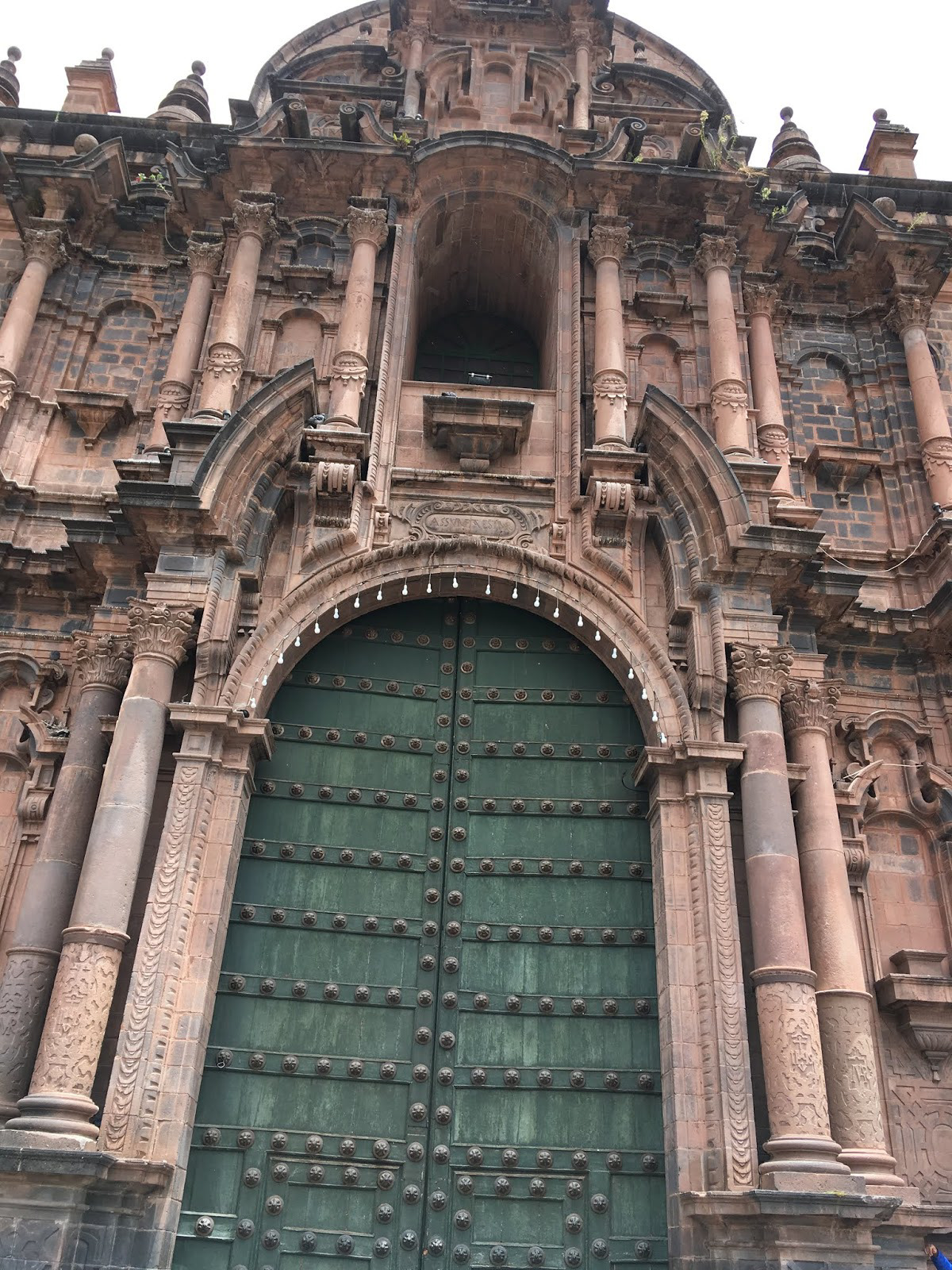
Cathedral @ Cusco

Tapestry@Inca Museum

Tapestry@Inca Museum

Tapestry@Inca Museum

Tapestry@Inca Museum

Mary had a little lamb

Weaver@Inca Museum

Traditional Peruvian garb

Cusco

Cusco
Belen Market @ Iquitos
Bottom row: A drunk man approached, asking me to go away. I offered 5 soles, and he agreed to have his photo taken.

Crocodile tail

Vendor

Turtle
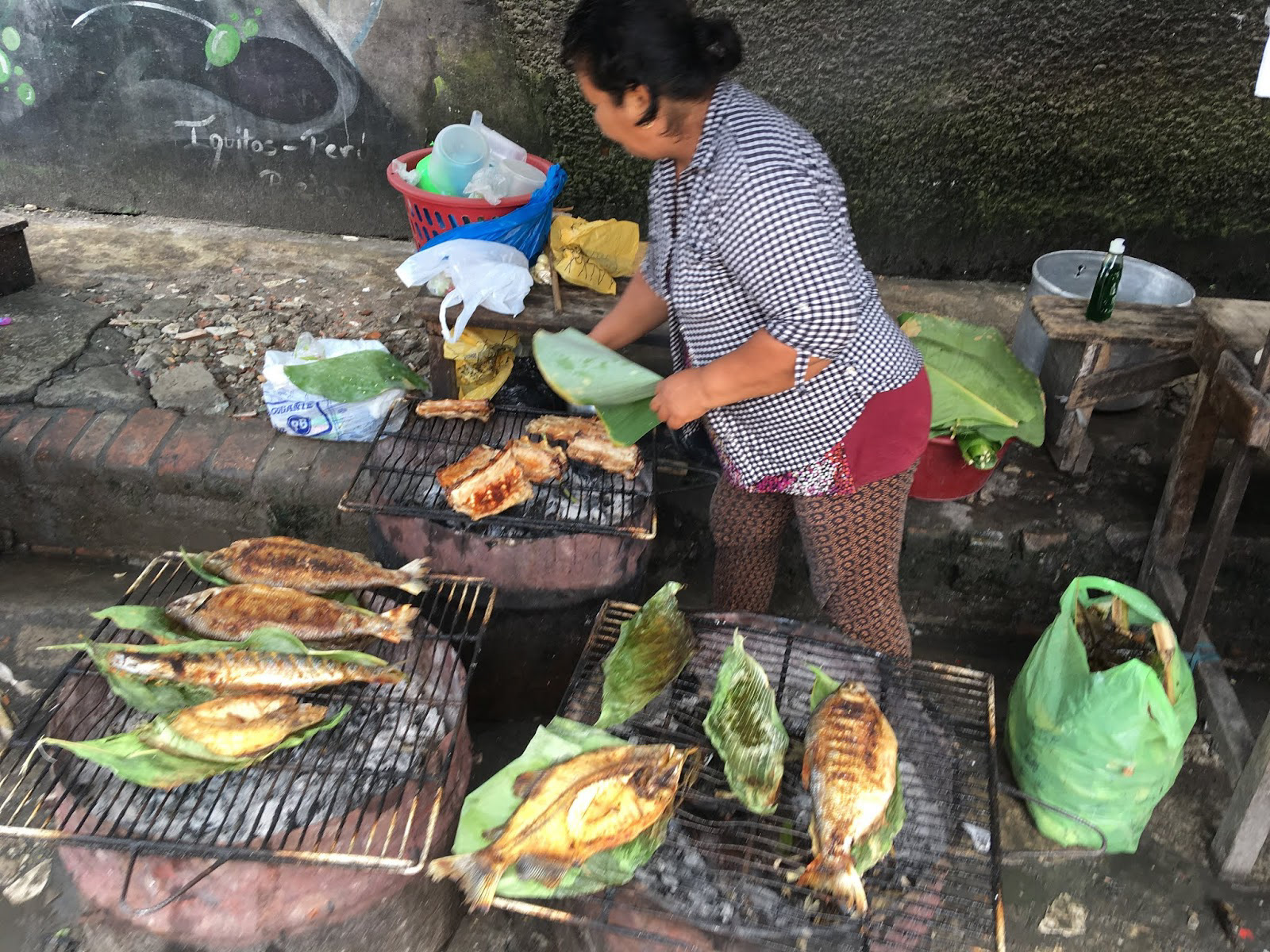
Grilled fish

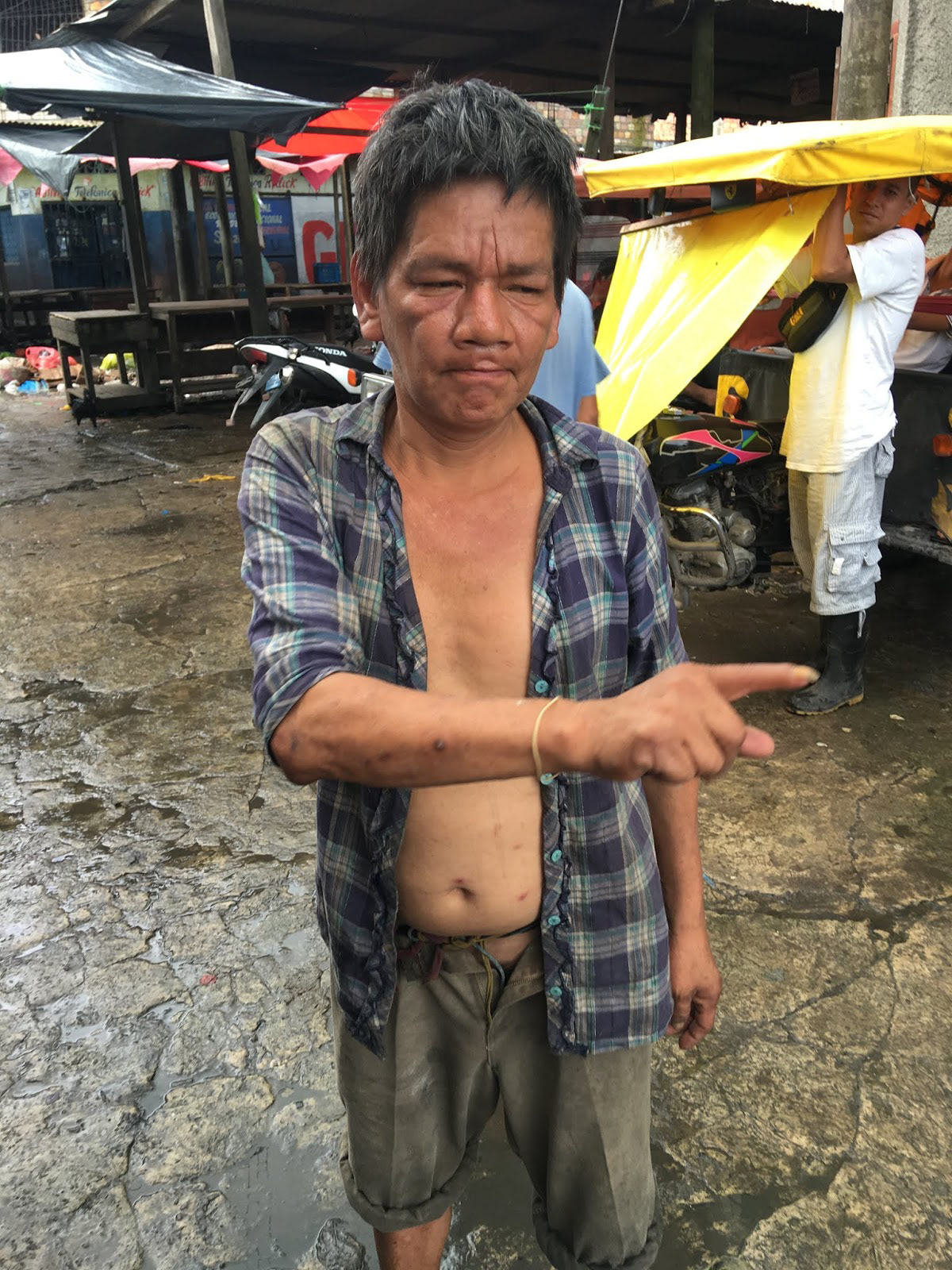
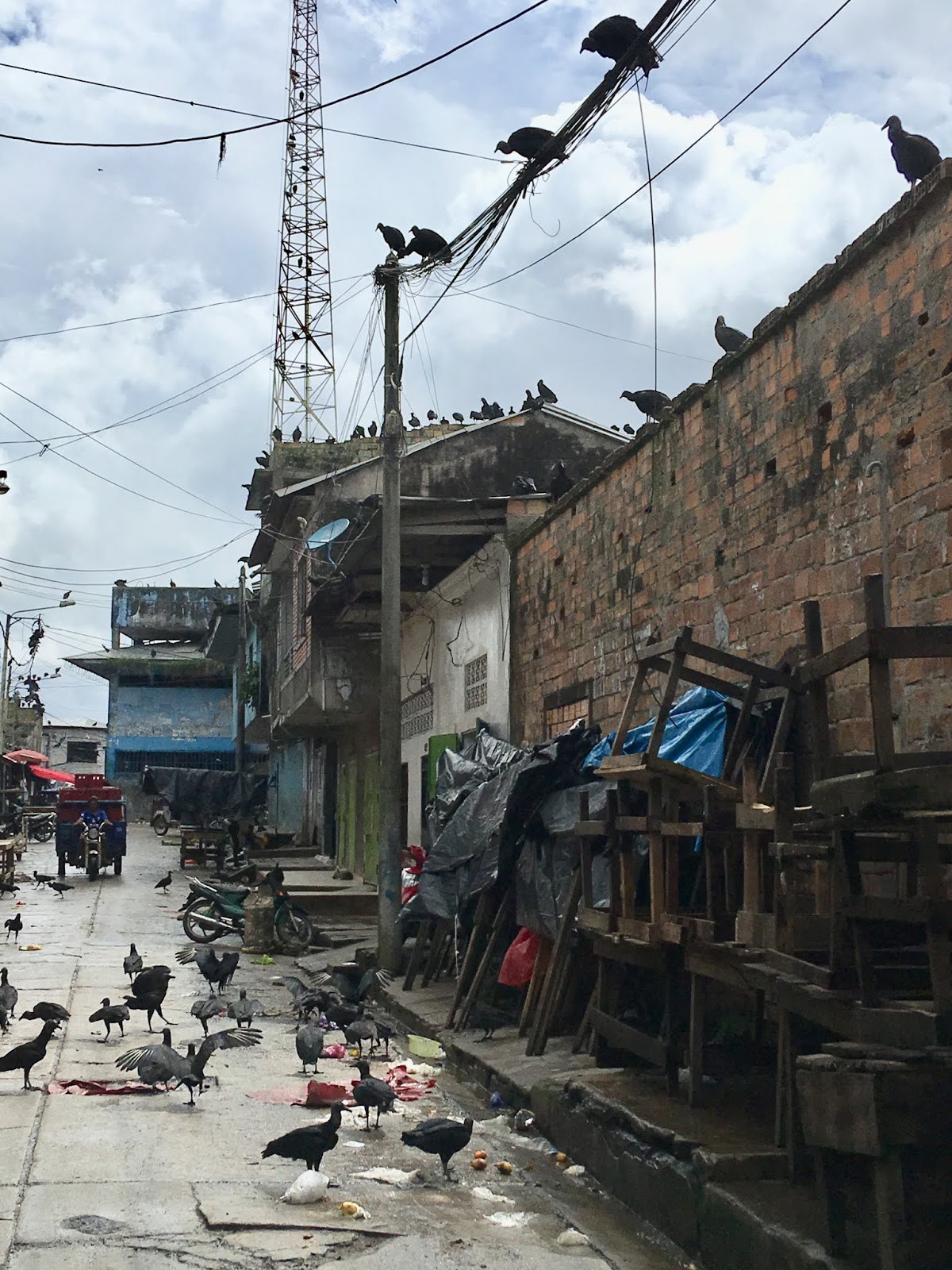
Buzzards feeding on carrion
Iquitos and Belen Market
Top left: Bar customer drinking with a friend and dancing to Rod Stewart's "Young Turks".
Bottom: Hallucinogens, including Ayahuasca, are often used in tribal rituals. Only to be used with guidance from a shaman. After diarrhea and vomiting, users report nightmarish hallucinations and out-of-body experiences and sometimes claim to be freed from addiction.

Bar customer

Dock near floating village
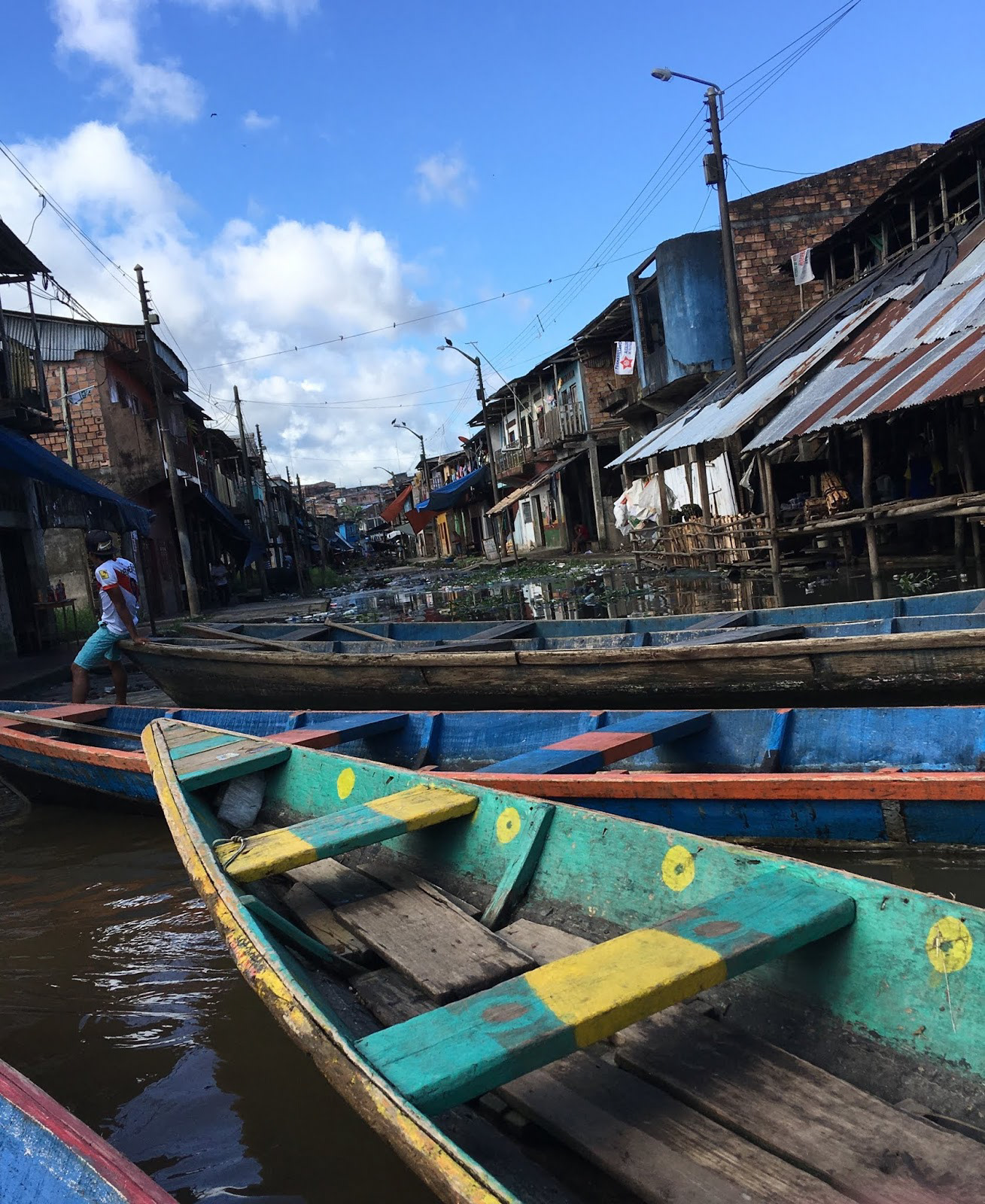

Plaintain bunch: 10 soles ($3.30)

Hallucinogens: San Pedro (Mescaline)

Hallucinogens: Salvia

Hallucinogens: Ayahuasca
Amazon Jungle

23 varieties of bananas are found in the jungle

Coconuts

Papaya

Papaya

Papaya


Bird of Paradise



Probing for a hand-sized tarantula
Amazon Jungle and return trip
Bottom left: Long-time jungle village inhabitant who 'communicates with plants' and I are highly amused by our toasty boat driver.

Thatched hut

Piraña lunch

Smile!
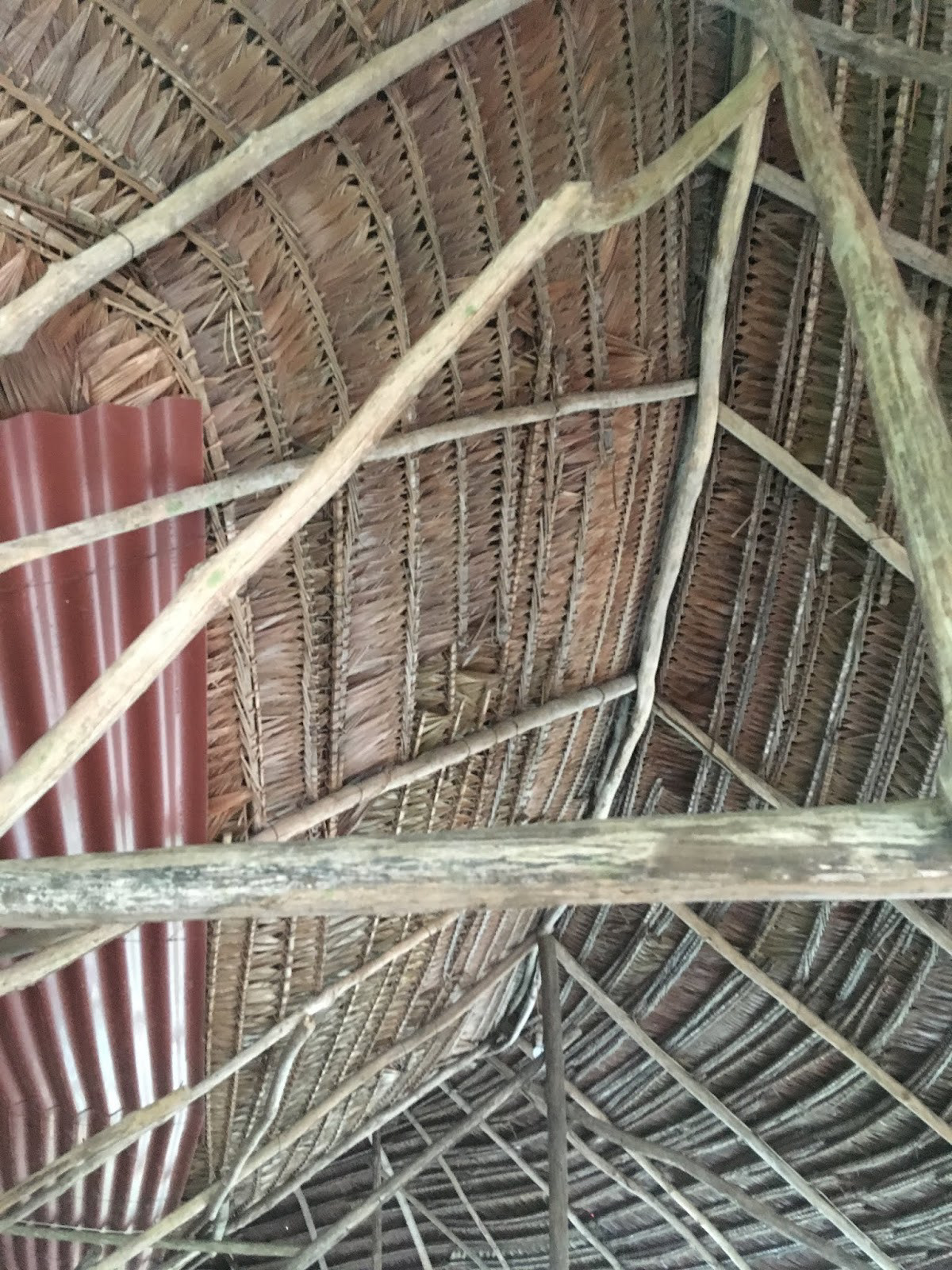
Thatched hut

Return trip

Floating water plant
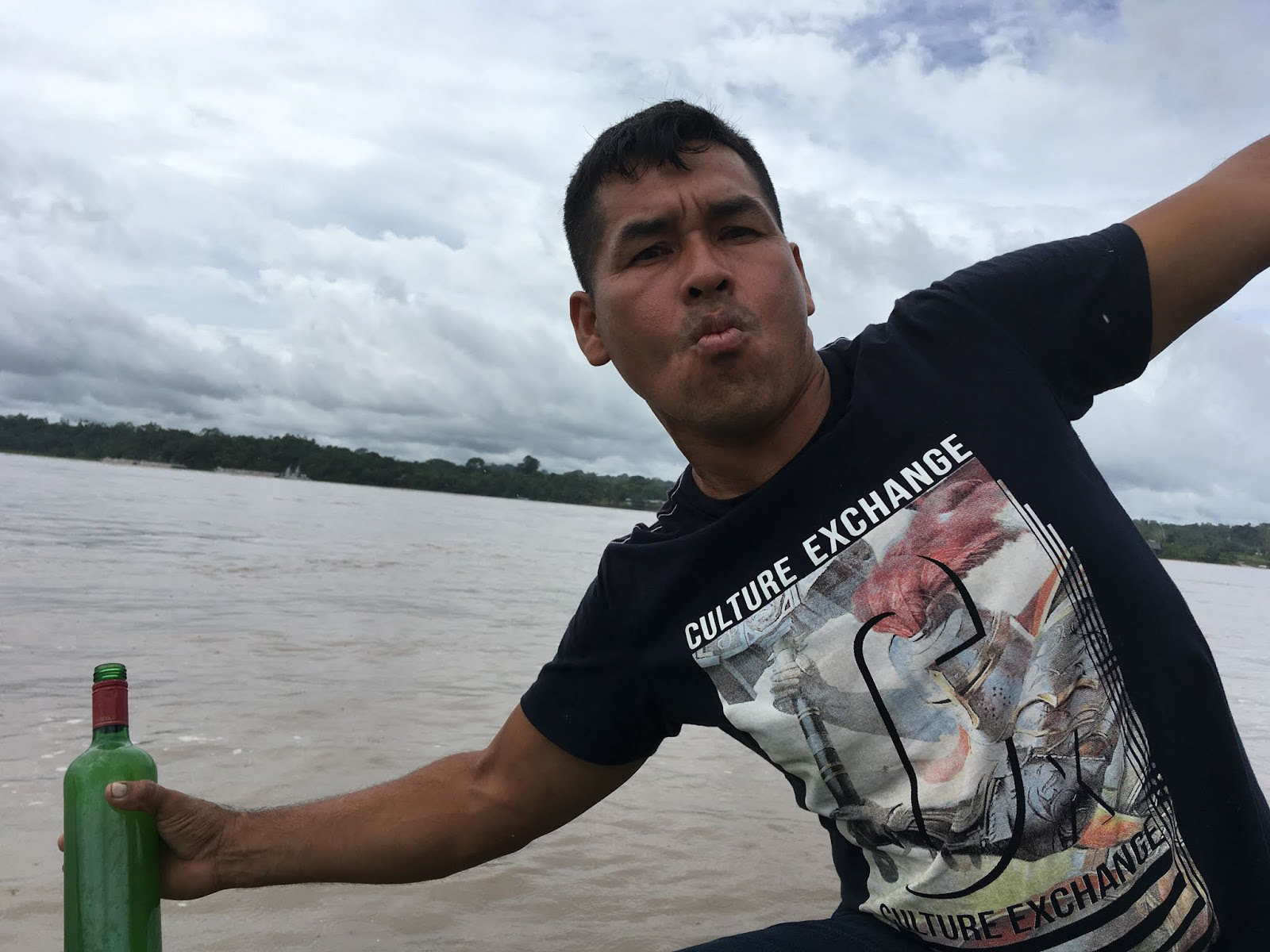
Our boat driver
Miraflores, Lima

Monument to Staff God as depicted on the Raimondi Stele
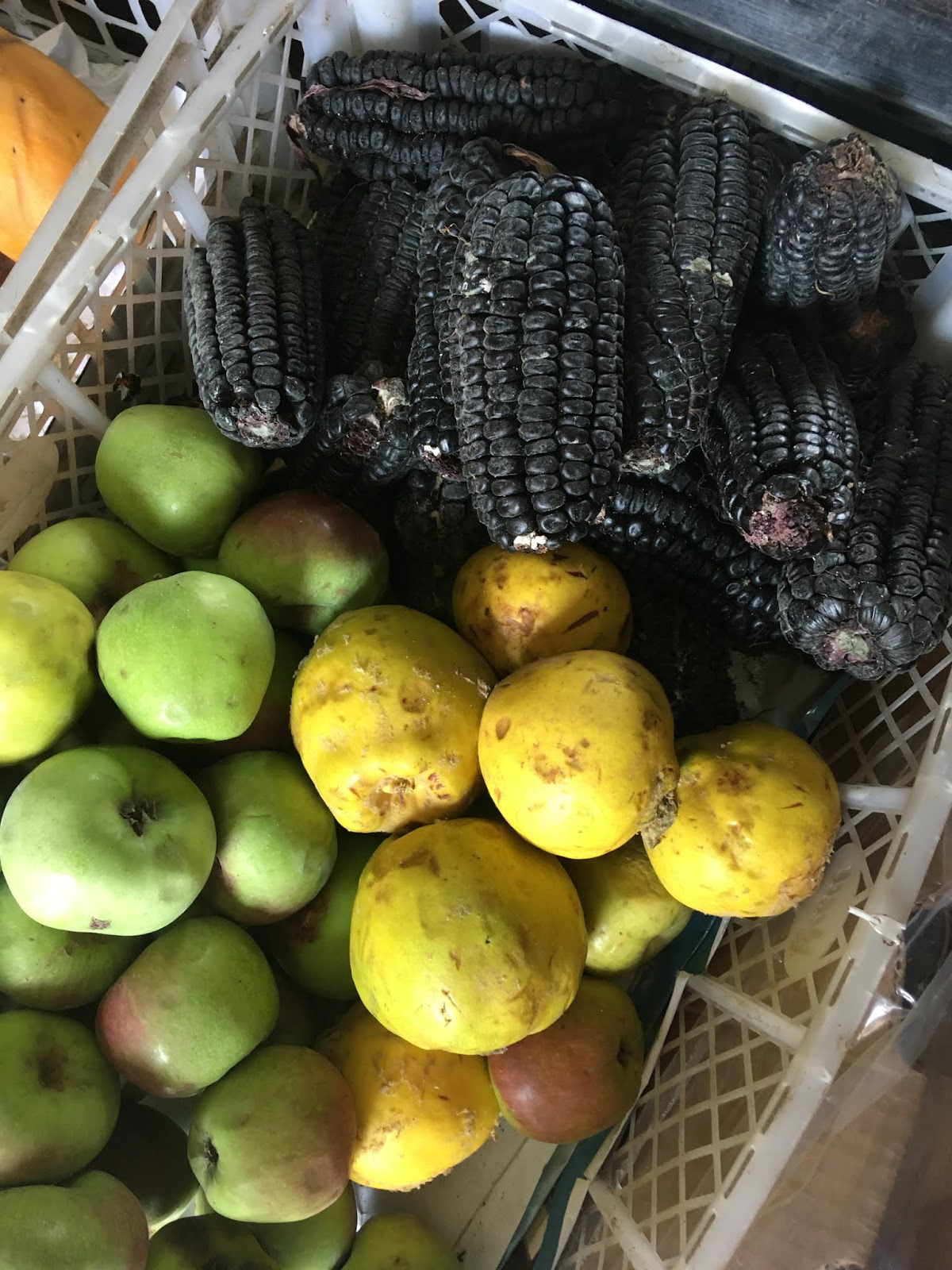
Black corn (maize) @ Miraflores convenient store

Seaside cliffs@Miraflores

Architecture@Miraflores
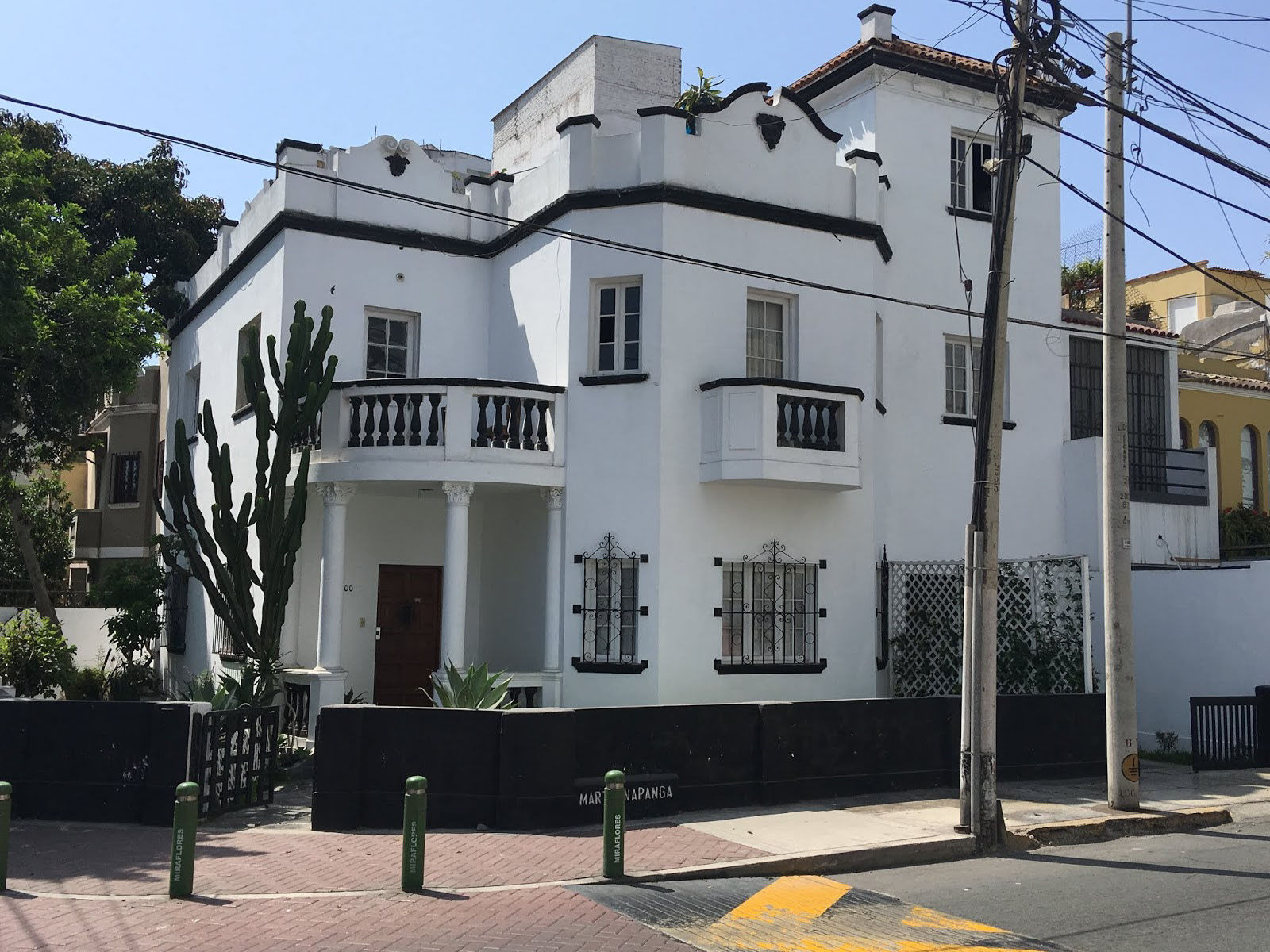
Architecture@Miraflores

Restaurant foyer Inca masks

Inca-themed restaurant@Miraflores

Ceviche, maize

Inca-themed restaurant@Miraflores

Inca-themed restaurant@Miraflores
